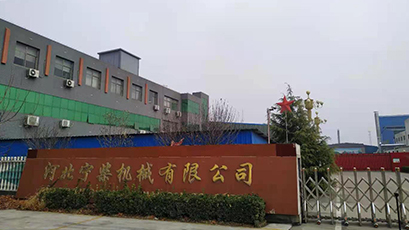
-
 Afrikaans
Afrikaans -
 Albanian
Albanian -
 Amharic
Amharic -
 Arabic
Arabic -
 Armenian
Armenian -
 Azerbaijani
Azerbaijani -
 Basque
Basque -
 Belarusian
Belarusian -
 Bengali
Bengali -
 Bosnian
Bosnian -
 Bulgarian
Bulgarian -
 Catalan
Catalan -
 Cebuano
Cebuano -
 Corsican
Corsican -
 Croatian
Croatian -
 Czech
Czech -
 Danish
Danish -
 Dutch
Dutch -
 English
English -
 Esperanto
Esperanto -
 Estonian
Estonian -
 Finnish
Finnish -
 French
French -
 Frisian
Frisian -
 Galician
Galician -
 Georgian
Georgian -
 German
German -
 Greek
Greek -
 Gujarati
Gujarati -
 Haitian Creole
Haitian Creole -
 hausa
hausa -
 hawaiian
hawaiian -
 Hebrew
Hebrew -
 Hindi
Hindi -
 Miao
Miao -
 Hungarian
Hungarian -
 Icelandic
Icelandic -
 igbo
igbo -
 Indonesian
Indonesian -
 irish
irish -
 Italian
Italian -
 Japanese
Japanese -
 Javanese
Javanese -
 Kannada
Kannada -
 kazakh
kazakh -
 Khmer
Khmer -
 Rwandese
Rwandese -
 Korean
Korean -
 Kurdish
Kurdish -
 Kyrgyz
Kyrgyz -
 Lao
Lao -
 Latin
Latin -
 Latvian
Latvian -
 Lithuanian
Lithuanian -
 Luxembourgish
Luxembourgish -
 Macedonian
Macedonian -
 Malgashi
Malgashi -
 Malay
Malay -
 Malayalam
Malayalam -
 Maltese
Maltese -
 Maori
Maori -
 Marathi
Marathi -
 Mongolian
Mongolian -
 Myanmar
Myanmar -
 Nepali
Nepali -
 Norwegian
Norwegian -
 Norwegian
Norwegian -
 Occitan
Occitan -
 Pashto
Pashto -
 Persian
Persian -
 Polish
Polish -
 Portuguese
Portuguese -
 Punjabi
Punjabi -
 Romanian
Romanian -
 Russian
Russian -
 Samoan
Samoan -
 Scottish Gaelic
Scottish Gaelic -
 Serbian
Serbian -
 Sesotho
Sesotho -
 Shona
Shona -
 Sindhi
Sindhi -
 Sinhala
Sinhala -
 Slovak
Slovak -
 Slovenian
Slovenian -
 Somali
Somali -
 Spanish
Spanish -
 Sundanese
Sundanese -
 Swahili
Swahili -
 Swedish
Swedish -
 Tagalog
Tagalog -
 Tajik
Tajik -
 Tamil
Tamil -
 Tatar
Tatar -
 Telugu
Telugu -
 Thai
Thai -
 Turkish
Turkish -
 Turkmen
Turkmen -
 Ukrainian
Ukrainian -
 Urdu
Urdu -
 Uighur
Uighur -
 Uzbek
Uzbek -
 Vietnamese
Vietnamese -
 Welsh
Welsh -
 Bantu
Bantu -
 Yiddish
Yiddish -
 Yoruba
Yoruba -
 Zulu
Zulu
self servo action drum brakes
Understanding Self-Servo Action in Drum Brakes
Self-servo action in drum brakes is a crucial mechanism that enhances the efficiency and effectiveness of braking systems in various vehicles, particularly in older models and some modern designs. This braking system operates based on mechanical advantage, resulting in enhanced braking performance with minimal driver effort.
Understanding Self-Servo Action in Drum Brakes
When the brake shoes make contact with the drum, they begin to exert a force that causes the drum to rotate in the opposite direction. As the drum turns, it exerts a force on the rear-facing side of the brake shoes. This force effectively increases the pressure exerted by the shoes against the drum, creating a self-augmenting effect. In essence, the motion of the drum assists in clamping the brake shoes tighter against it, leading to greater friction and therefore more stopping power. This mechanism significantly reduces the amount of effort required by the driver to achieve effective braking.
self servo action drum brakes

One of the primary advantages of self-servo action in drum brakes is that it allows for a more efficient use of the available braking force. This results in less wear on the braking components and can lead to a longer lifespan for the brake system as a whole. Moreover, self-servo drum brakes can provide stable and reliable stopping power even under heavy loads, making them a popular choice for commercial vehicles and trailers.
However, it is essential to note that while self-servo action offers numerous benefits, it is not without limitations. Issues such as fading under prolonged use, the potential for uneven wear, and the intricacies of adjustment may present challenges. Regular maintenance and inspection are vital to ensure that the braking system functions optimally and safely.
In conclusion, self-servo action drum brakes are an innovative solution that leverages the dynamics of motion to enhance braking performance. Their design features promote efficiency and effectiveness, making them a significant aspect of automotive engineering. Understanding this mechanism helps us appreciate the complexity involved in vehicle safety systems.
-
What Are Drum BrakesNewsJul.07,2025
-
Understanding Brake Drum MaterialNewsJul.07,2025
-
Semi-Trailer Brake Drum: A Key Component for Extreme Loads and Long-Distance TransportNewsJul.07,2025
-
Drum Brake Pads for SaleNewsJul.07,2025
-
Brake Drums for SaleNewsJul.07,2025
-
Brake Drum ManufacturerNewsJul.07,2025
-
Aluminum Brake Drums: The Future of High-Performance CarsNewsJul.07,2025
